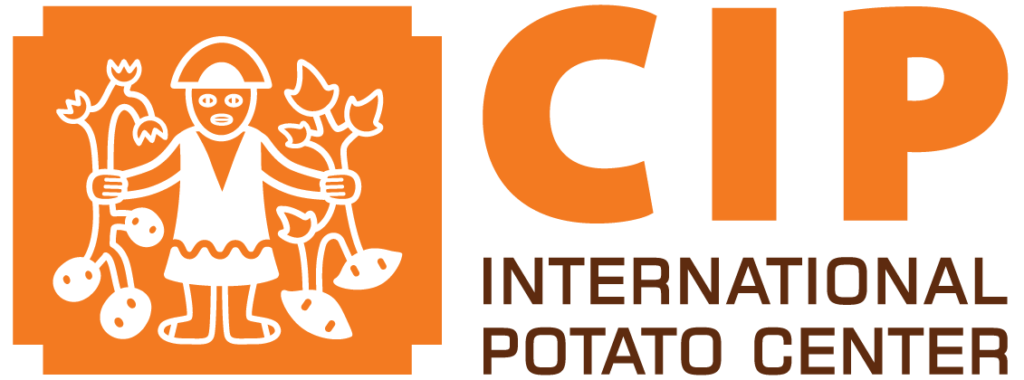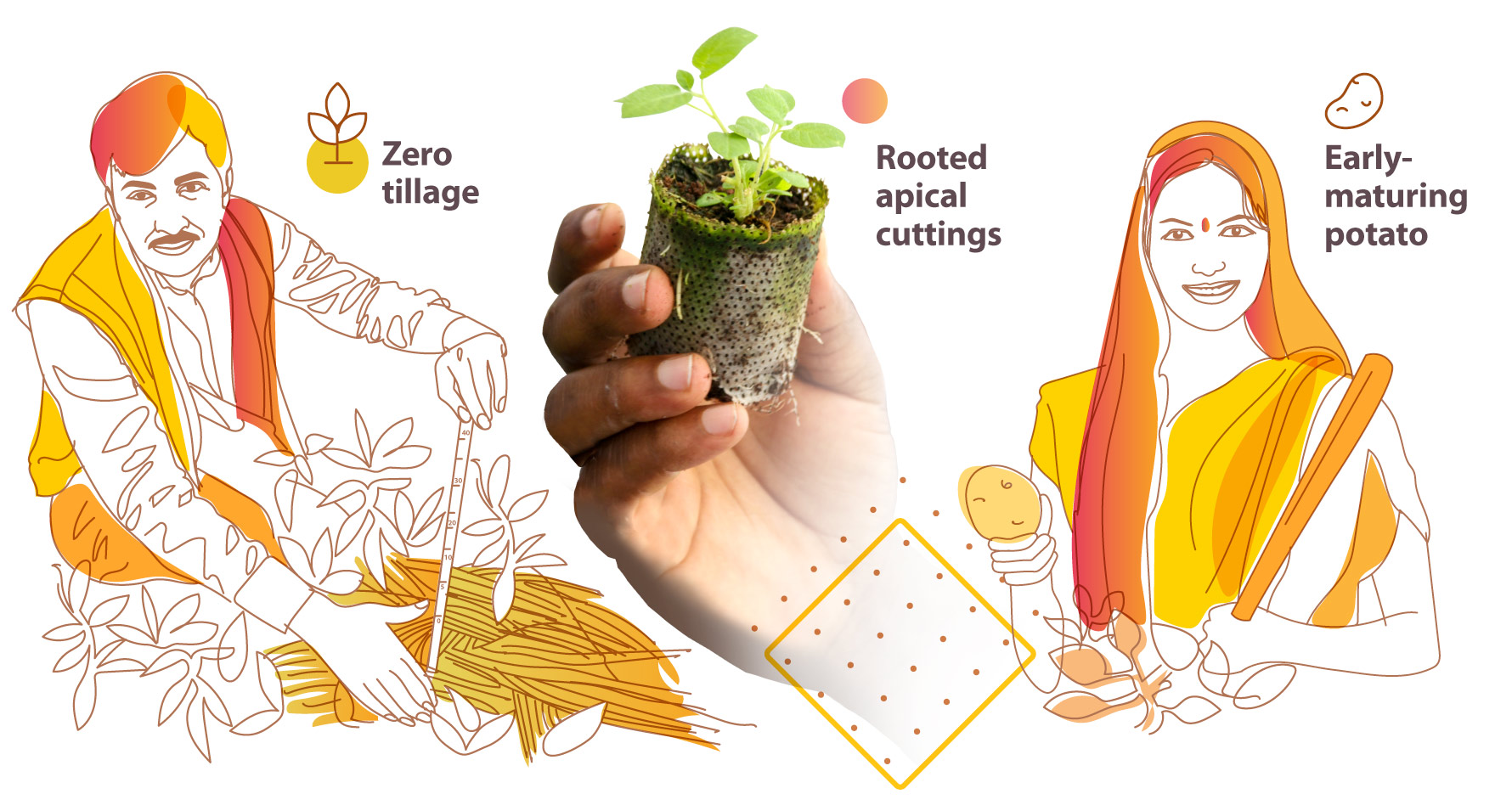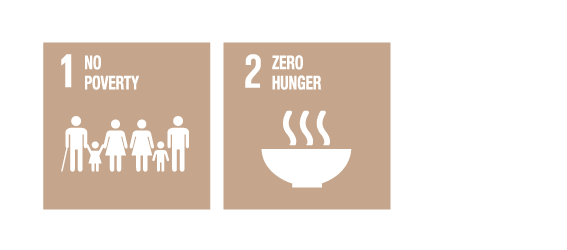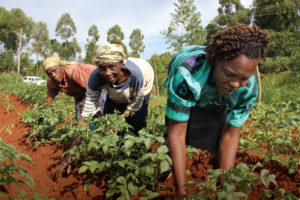Agriculture intensified
Bridging the sustainability gap in India
Though India comprises just 2.4% of the world’s land area, it produces food for almost 18% of the global population. But as the nation burgeons toward a population of more than 1.6 billion by 2050, its farmers will need to produce more food than ever. One way to meet that challenge is sustainable intensification – increasing food production on existing farmland while minimizing environmental impacts.
Good examples can be found in the Indian states of Assam and Odisha, where small-scale farmers have been testing and adopting cost-effective ways to grow potatoes in their rice paddies after harvest, using a labor-saving zero-tillage method. They simply place seed potatoes on the moist ground, add some compost and fertilizer, cover with rice straw, and within three months or less they can harvest potatoes on land that would otherwise have been fallow.
By increasing the amount of food produced on existing farmland, sustainable intensification can serve as a vaccine against hunger, environmental degradation and poverty. One study estimated that growing potato in the 6.2 million hectares of paddies in northeastern India and Bangladesh that lay fallow each year – more than 10% of the area dedicated to rice in the two countries combined – could generate up to USD 800 million per year as additional farmer income.
And while various crops can be incorporated into grain farming systems, potato has additional advantages: It produces more food per hectare and requires less water than rice. This is particularly important in India, which has only 4% of the world’s fresh water, and dedicates 80% of its water use to agriculture. Early-maturing varieties that are ready to harvest within 75-90 days of planting can be cultivated in windows between rice or wheat or other crop cycles that were once too short for food production
Sustainable innovations
Zero tillage is just one in a portfolio of innovations the International Potato Center (CIP) shared with 25,000 Indian farmers in 2020, despite limiting field activities due to the pandemic. CIP is promoting various technologies and approaches to facilitate sustainable intensification on a portion of India’s nearly 44 million hectares of paddies.
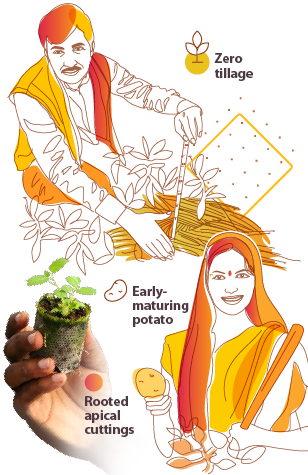
Zero tillage is attractive because it reduces labor and the cost of cultivation. By planting potatoes after a rice harvest, farmers take advantage of residual soil moisture, which the straw cover preserves, reducing the need for irrigation. An estimated 14 million tons of rice straw are burned in India each year – the equivalent of a truckload every minute –exacerbating air pollution and contributing to the country’s greenhouse gas emissions. Just as important, planting immediately after the rice season allows farmers to harvest early and sell their potatoes at higher prices before the main harvest creates a market glut.
“Farmers are very enthusiastic about this innovation,” says CIP research associate Shahid Ali, who has promoted zero tillage in Odisha. “Women are more interested than men, because zero tillage requires less labor but the yields are comparable to that of conventional potato farming.”
Improving access to quality seed is an important component of this work. Currently, buying disease-free seed can represent 40-50% of an Indian potato farmer’s production costs, which is why many smallholders plant poor quality seed, and consequently suffer low yields. To remedy this problem, CIP and the Indian Council of Agricultural Research have trained hundreds of farmers and technicians in apical rooted cuttings, a game changing technology that decentralizes production and enables more farmers to plant quality seed with minimal investment. Hundreds of thousands of rooted cuttings have been sold to seed multipliers, who have used them to produce millions of seed potatoes for farmers in Assam, Odisha and Karnataka.
Empowering farmers
To facilitate adoption of these innovations and others, smallholders – who constitute 80% of India’s farmers – are employing the “small farmers, large field,” approach, which helps them organize and synchronize farm activities such as plowing, fertilizing or harvesting to improve their bargaining and purchasing power. Thousands of farmers in Assam and Odisha are using the approach to reduce the cost of inputs and mechanization, and improve access to markets.
While COVID 19 curtailed field activities in 2020, implementation of safe practices and the use of virtual platforms allowed training to continue throughout the year. The improved potato and sweetpotato varieties and appropriate technologies adopted will contribute to nutrition security, livelihoods and food system transformation for years to come, and help India build back better – and stronger.


Funders: CGIAR Trust Fund donors, Government of India, World Bank.
Partners: Centre of Excellence for Research & Development of Potato and Sweetpotato, India; Indian Council of Agricultural Research, Central Potato Research Institute; Potato Technology Centre Shamgarh Karnal; University of Horticultural Sciences Bagalkot; State governments of Assam, Haryana and Odisha, India.
Associated CGIAR Research Programs or Platforms: Roots, Tubers and Bananas.
